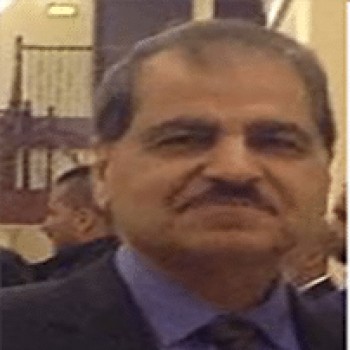The Immune System: Innate and Adaptive Immunity
KEY CONCEPTS
- Immunity entails innate and adaptive elements and responses.
- Immune diversity and memory are mediated by B and T lymphocytes.
- Immunity evolved in the earliest multicellular animals.
All somatic cells of a eukaryotic organism have the same genetic information, and their phenotypes are determined by the differential control of expression of the same gene(s). A most important exception to this axiom of genetics occurs in the immune system. In developing B and T lymphocytes, genomic DNA changes in antigen receptor–encoding loci through somatic recombination create functional genes consisting of DNA sequences that are not found in the germline. In B lymphocytes that are activated by antigens to divide and differentiate, additional DNA recombination and hypermutation in the previously recombined Ig loci further diversify the biological effector functions and change the antigen-binding affinity of the produced antibodies.
The immune system of vertebrates mounts a protective response that distinguishes foreign (nonself) soluble or microorganismassociated molecules (antigens) from molecules or cells of the host (self-antigens). Innate immunity provides an immediate (without latency) first line of host defense against invading microbial pathogens by using receptors encoded in the germline, recognizing conserved structural patterns that are present across microbial species. It triggers responses by different effector white blood cells (e.g., macrophages and neutrophils), depending on the nature of the inducing microbial components. The innate response is relatively nonspecific for any given pathogen and generally elicits no immune memory. It can, however, modulate the adaptive immune response elicited by and mounted against a specific microorganism.
In contrast to innate immunity, the adaptive response (i.e., acquired immunity) is elicited by and mounted against a specific antigen. An antigen is in general a protein, a glycoprotein, a lipoprotein, or a glycolipid, such as found on infecting viruses or bacteria. The adaptive immune response triggered by those antigens will eventually destroy the infecting virus or bacterium expressing it. It is effected by B and T lymphocytes, with the assistance of other white blood cells, such as dendritic cells (DCs). B and T lymphocytes are named after the lymphoid organ in which they mature. The “B” in B cells stems from the bursa of Fabricius, which is named after Hieronymus Fabricius, the Italian anatomist who is considered the “Father of Embryology.” He recognized in the 16th century that this hematopoietic organ in birds is the equivalent of mammalian bone marrow, in which B cell development occurs. The “T” in T cells stems from thymus.
Both B and T lymphocytes use DNA rearrangement as the mechanism for production of the proteins that enable them to specifically recognize an antigen in the adaptive immune response.
The adaptive immune response is characterized by a latency period —in general a few days—required for the expansion of foreign antigen–specific B cells and/or T cells that survive clonal deletion, a process by which B and T cell clones showing a high reactivity to self-antigens are deleted. The structural basis for foreign antigen–specific responses is provided by the expression of a large number of unique B cell receptors (BCRs) and T cell receptors (TCRs) on B and T lymphocyte clones, respectively. Such a highly diverse BCR and TCR repertoire allows the host to deal with an almost infinite number of foreign molecules. Binding of antigen to the BCR activates B cells and triggers the antibody response; activation of the TCR triggers T helper cell (Th )– and cytotoxic T cell (CTL)–mediated responses. Antigen-activated B and T cells also differentiate into memory B and T cells, which underpin immunological memory. This provides protective immunity against the same antigen that drove the original response. The immune memory enables the organism to respond rapidly once exposed again to the same pathogen.
All jawed vertebrates (gnathostomes) display innate and adaptive immune responses. In evolution, immunity arose in the earliest multicellular animals and plants by the need to distinguish self cells and molecules from infectious nonself cells and their products.
Invertebrates have an innate immune system but no adaptive system. Among vertebrates, jawless vertebrates (agnathans), such as lamprey and hagfish, display an innate immunity as well as a primitive form of adaptive immunity. In agnathans, thymus-like microanatomical structures, thymoids, and lymph node–like structures, typhlosoles, exist in the intestine of larvae; in adults, gills and kidneys provide residence for cells resembling mammalian monocytes, granulocytes, and lymphocytes. Recirculating lymphocyte-like cells in typhlosoles also express genes that are orthologs of genes important for lymphocyte development.
Remarkably, agnathan antigen receptors (variable lymphocyte receptors, VLRs) are also generated by a recombination mechanism involving cytosine deaminase 1 (CDA1) or CDA2, which belong to the AID/APOBEC family of cytosine deaminases. T-like cells express CDA1 to assemble their VLRA gene repertoire, whereas B-like cells express CDA2 to assemble their VLRB gene repertoire. By contrast, they do not express orthologs of genes essential for recombination in T and B lymphocytes in jawed vertebrates. Immunization of lamprey with antigens, such as bacteria and synthetic antigens, elicits proliferation of VLRA+ and VLRB+ cells as well as cytokine- and antibody-like responses, similar to T and B cell responses in jawed vertebrates.
















